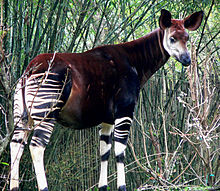 Living Legend is coming out a little later this year and in the progress of writing it, I did a lot of research nto Cryptozoology. I thought it was going to a journey into strange desires and controversies. I was wrong.
Living Legend is coming out a little later this year and in the progress of writing it, I did a lot of research nto Cryptozoology. I thought it was going to a journey into strange desires and controversies. I was wrong.
It’s fascinating.
The pseudoscience is most commonly associated with the study of creatures like the Loch Ness monster and bigfoot, and though that’s part of it, it’s not the whole of it.
Cryptozoology is the study of animals whose existence is not proven. On the surface, that may sound like the same thing, but there are some differences.
Trying to prove a species still exists after being declared extinct would fall under Cryptozoology. If you go out and make it your goal to find a living dodo bird, guess what, you’re a Cryptozoologist.
The second difference is not all animals searched for are sasquatches and dinosaur-like creatures. These studies have actually brought about the discovery of a few brand new species.
 The Okapi was thought to be a joke or a hallucination due to how absurd it must have sounded to describe to someone. “Well, you see, it’s somewhere between a giraffe and a deer with zebra stripes.” Who wouldn’t think you were drinking? But in 1901 these funny-looking guys were discovered in the Congo.
The Okapi was thought to be a joke or a hallucination due to how absurd it must have sounded to describe to someone. “Well, you see, it’s somewhere between a giraffe and a deer with zebra stripes.” Who wouldn’t think you were drinking? But in 1901 these funny-looking guys were discovered in the Congo.
Same story goes for the Komodo Dragon. It was feared and revered as a myth known only as the Giant Monitor. The real thing was found in the Indonesian islands in 1912.
Most cryptozoologists reject supernatural beliefs and prefer to follow the scientific method, though they sometimes have to stray when physical proof isn’t available. Still, when other stories turned out to be real could you ever completely dismiss a myth again?

Part of me always hopes that Cryptozoologists will find what they’re looking for, no matter how absurd. With news like the extinction of the African Black Rhino (this week), it’s hard not to hope that we’re just not finding them, instead of those animals simply being gone.
Well said!
I’ve seen a documentary of a cryptozoologist receiving hair and faecal samples as well as footprint cats from all over, trying to research and ultimately prove Bigfoot’s existence. It must be difficult to be ridiculed to for something you believe in and are trying to prove with scientific fact.
Agreed. It’s probably different if there isn’t a shred of anything out there, but when there’s unexplained anything, there are those that attempt to explain it.
cryptozoologists … I had never heard of the word… Love the word and the concept! I have a love for writing and archaeology… therefore historical fiction is my thing… Research into some of these lovely beings would be right up my alley! Stop in and visit! https://rogershipp.wordpress.com/